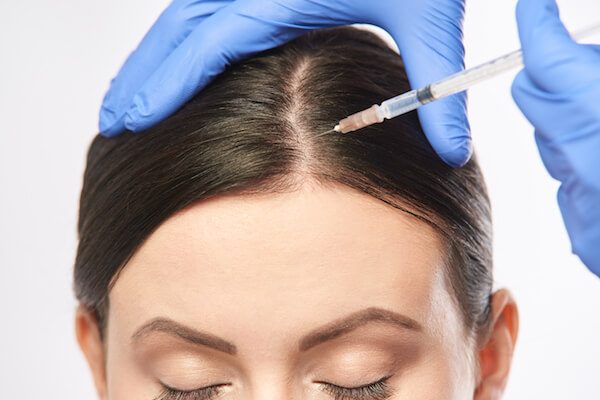Platelet-Rich Plasma (PRP) hair therapy has gained significant popularity as a non-invasive treatment option for hair restoration. This innovative procedure involves using the patient’s own blood, which is processed to concentrate platelets rich in growth factors, and then injected into the scalp to stimulate hair growth. As an emerging solution, many individuals experiencing early signs of baldness are curious about its effectiveness and whether it can serve as a viable alternative to traditional hair loss treatments. Understanding the fundamentals of PRP hair Abu Dhabi and its potential benefits is essential for those considering this approach.
How Does PRP Hair Therapy Work?
The Science Behind PRP
PRP therapy leverages the body’s natural healing mechanisms. The process begins with drawing a small amount of blood, which is then spun in a centrifuge to separate the platelet-rich plasma from other blood components. This concentrated plasma, packed with growth factors and nutrients, is carefully injected into areas of thinning or early baldness on the scalp. The growth factors promote the proliferation of hair follicle cells, improve blood circulation, and enhance the health of existing hair follicles, potentially leading to thicker, stronger hair strands over time.
The Procedure in Brief
The procedure typically involves minimal discomfort and can often be completed within an hour. After preparing the scalp area through cleansing and possibly applying a local anesthetic, the practitioner performs multiple injections across the affected regions. Post-treatment, patients may experience mild swelling or soreness, but these effects are generally temporary. The therapy usually requires multiple sessions spaced several weeks apart to achieve optimal results, with maintenance sessions recommended to sustain hair growth.
Is PRP Hair Therapy Suitable for Early Baldness?
Early Intervention and Hair Loss
Early baldness, characterized by thinning hair and receding hairlines, often responds well to treatments aimed at stimulating hair growth before significant hair loss occurs. PRP therapy is particularly effective during these initial stages because it targets the health of existing hair follicles and encourages new growth. When started early, the treatment can help preserve hair density, prevent further loss, and improve overall scalp health.
Benefits for Early Stages
For individuals in the early stages of baldness, PRP offers a proactive approach to managing hair loss. It can strengthen weak hair follicles, improve scalp circulation, and promote a conducive environment for hair growth. Because it is minimally invasive and involves the use of the patient’s own blood, it is generally well-tolerated and suitable for those seeking natural and safe solutions.
Effectiveness of PRP Hair Therapy for Early Baldness
Evidence Supporting Its Use
Numerous clinical observations and studies suggest that PRP hair therapy can be effective in treating early baldness. Many patients report noticeable improvements in hair thickness, volume, and overall scalp health after a series of treatments. The growth factors in PRP stimulate the hair follicles’ dormant or weak phases, leading to new hair growth and enhanced density. While individual results vary, early intervention with PRP can often yield more significant and quicker improvements compared to waiting until hair loss becomes extensive.
Factors Influencing Success
The success of PRP therapy depends on various factors, including the severity of hair loss, the health of the scalp, and adherence to the recommended treatment plan. Regular sessions and proper scalp care post-treatment can maximize results. Additionally, combining PRP with other hair restoration strategies, such as topical medications or lifestyle modifications, can enhance overall effectiveness.
Comparing PRP Hair Therapy to Other Treatments
Non-Invasive Nature
Unlike surgical hair transplant procedures, PRP offers a non-invasive alternative with minimal downtime. Its natural approach, utilizing the body’s own growth factors, appeals to those hesitant about surgical options. This method is especially appealing for early-stage hair loss, where less aggressive interventions may suffice.
Complementary Use
PRP is often used in conjunction with other treatments like topical minoxidil or oral medications to improve outcomes. For early baldness, combining therapies can create a comprehensive approach to halt progression and promote healthy hair growth. Its versatility makes it an attractive option for personalized hair loss management.
Long-Term Outlook and Maintenance
Sustaining Results
While PRP therapy can produce encouraging short-term results, ongoing maintenance sessions may be necessary to sustain and enhance hair growth. Regular treatments help reinforce the health of hair follicles and prevent early baldness from advancing. Consistent scalp care and healthy lifestyle choices also play vital roles in maintaining the benefits achieved through PRP therapy.
Expectations and Realistic Goals
It is important to set realistic expectations. PRP may not fully restore lost hair or reverse advanced baldness, but it can significantly improve the quality and density of existing hair during early stages. Consulting with a qualified specialist helps tailor a treatment plan aligned with individual goals and hair loss patterns.
Conclusion: Is PRP Hair Therapy the Right Choice?
PRP hair therapy presents a promising, minimally invasive approach for individuals experiencing early baldness. Its ability to stimulate natural hair growth, improve scalp health, and potentially halt or slow down hair loss makes it an attractive option for those seeking early intervention. While results can vary, early treatment offers the best chance to maximize benefits and preserve hair density. Consulting with a qualified professional is essential to determine if PRP therapy aligns with your specific needs, ensuring a personalized plan for healthier, fuller hair.
FAQs About PRP Hair Therapy and Early Baldness
1. How soon can I expect to see results after PRP treatment for early baldness?
Most patients notice initial improvements within a few months after completing a series of sessions. Hair may appear thicker, with increased density and improved scalp health, with full results often visible around three to six months post-treatment.
2. Is PRP hair therapy safe for early baldness?
Yes, PRP therapy is generally considered safe, especially since it uses the patient’s own blood, minimizing the risk of allergic reactions or infections. It is a well-tolerated procedure suitable for early-stage hair loss.
3. Can PRP prevent further hair loss if started early?
While PRP can help strengthen existing hair follicles and promote new growth, it is most effective when combined with other hair preservation strategies. Early intervention can help delay progression, but maintaining results requires ongoing care.
4. How many PRP sessions are typically needed for early baldness?
The number of sessions varies depending on individual needs, but most protocols recommend a series of 3 to 4 treatments spaced about four to six weeks apart. Follow-up maintenance sessions may be advised to sustain results.







0 Comments